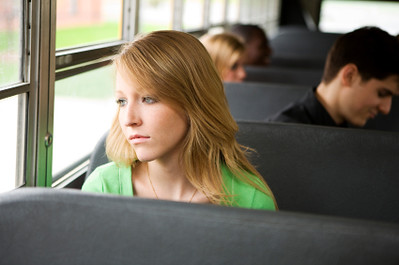
For many people, from professors to preschoolers, the end of August heralds the start of a new academic year. A new school year can be an exciting time for students who get to know new teachers and friends while showing off their best back-to-school clothes and supplies. However, for many students, going back to school means once again experiencing additional aggression from their peers.
During peer aggression, what we often refer to as bullying, youth experience unwanted aggression from other young person(s) who have power over them through physical, verbal, relational, or property-based actions. In 2021 more than one in five high school students said that they had experienced bullying in the past year.
Popularity and power are important motivators for peer aggression and bullying works to maintain status hierarchies. Most youth, apart from the “most elite,” are at risk of both bullying others and being victimized themselves, as young people bully and are victimized while jockeying for status. Social media has opened up new avenues for aggression and infinitely expanded the opportunities for bullying.
Sociologist Tressie McMillan Cottom reminds us that we have too often overlooked the role of physical attractiveness in granting privileges and resources. Although we like to tell young people that it’s what’s on the inside that counts, the reality is that adolescents are targeted according to traits such as physical attractiveness or athleticism.
There are gender differences in peer aggression, as well, with girls more likely to experience bullying than adolescent boys. Although we associate “catty” adolescent girls with gossiping that may constitute or accompany bullying, the gendered nature of peer aggression may result from greater social marginalization. Adolescents who do not identify as straight or who have sexual contact with people of the same gender are also more likely to experience bullying.
We also like to tell young people that “it gets better,” and that their hard academic work will matter more in fifteen years than whether they were invited to that party last weekend. However, research tells us that the mental and physical health consequences of bullying in adolescence can extend through adulthood.
As kids and teenagers return to school it is important to pay attention to their experiences without panicking. Some suggest that rates of peer aggression are not rising. Regardless of its true prevalence, the short-term and long-term consequences of bullying demand attention. Adults that care for adolescents should consider environmental changes that could foster the well-being of all teenagers given the limited control young people have over their own lives.
Suggestions for Further Reading
Christopher Donoghue and C.J. Pascoe. 2023. “A Sociology of Bullying: Placing Youth Aggression in Social Context.” Sociology Compass 17(4):e13071.
Christopher Donoghue. 2022. The Sociology of Bullying. NYU Press.
Robert Faris and Diane Felmlee. 2014. “Casualties of Social Combat.” American Sociological Review 79(2):228.

Comments